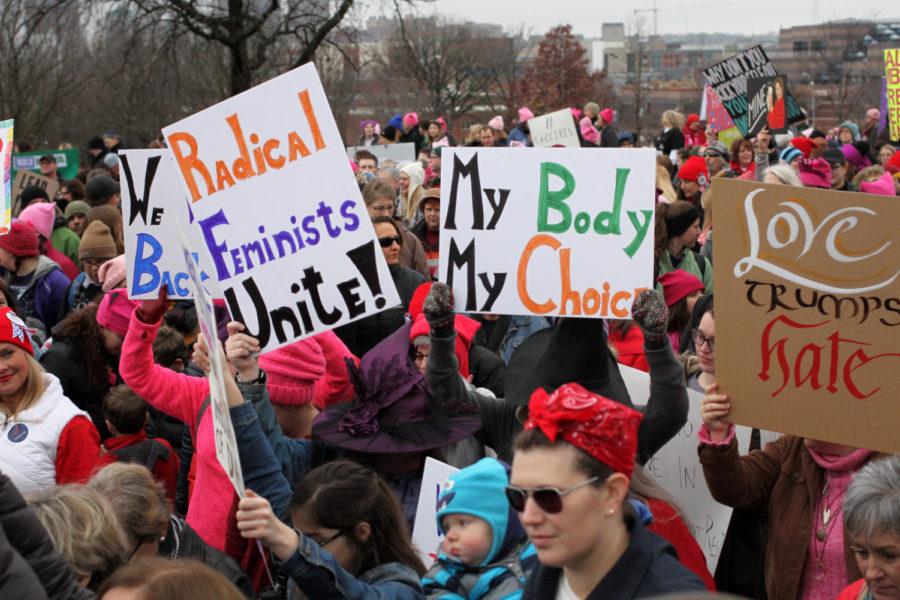Editorial: Safe abortions save lives
Hannah Olson / Iowa State Daily
Thousands hold signs relating to women’s health during the Women’s March on the Iowa Capitol on Jan. 21.
January 27, 2018
In 1973, the Supreme Court ruled on the case Roe v. Wade. Many people think that case initiated legal abortions in the United States. Actually, it was the reinstatement of legal abortions. In both Europe and the U.S., abortions were legal until restrictive laws were passed during the 19th century.
This relatively unknown history demonstrates the fact that women have received abortions as long as women have been able to reproduce. Even today, reproductive health specialists estimate that about half of all births are unplanned. Over a year of typical use, nine percent of women on the pill will become pregnant.
Opponents of abortion choice claim they are “pro-life.” But that is a simplistic statement that addresses the abortion issue in a narrow and biased way, ignoring or minimizing the realities of child-bearing concerns, particularly those of lower-income women.
Abortion occurs when birth control fails, is unavailable or is unaffordable. Because accessibility of birth control is not consistent across economic status, abortion in the U.S. is a class and race issue. The CDC reports that among women who are not trying to conceive, those earning more than $44,700 per year abort 32 percent of their known pregnancies. Among women at the poverty level, the abortion rate is nine percent.
Yet the total number of abortions is greater among low-income women. Why? Because unwanted pregnancies are greater among low-income women.
Laws that make birth control less accessible and affordable increase abortions. Laws that restrict access to abortions exacerbate the effect of economic status. Lower-income women are less likely to be able to take time off from work to go to distant clinics and comply with waiting period requirements.
They are less likely to be able to afford to pay if their insurance doesn’t. Child-bearing, low-income women face higher rates of childbirth mortality. Even more chillingly, infant mortality among black children is more than twice the rate of white infants.
When pregnancies are planned, research is very clear that children are healthier, their infant survival rates are higher, they live longer, are less likely to live in poverty and even have better long-term educational outcomes.
So those who oppose abortion because they are “pro-life” should, perhaps paradoxically, support affordable and accessible contraception for all women, regardless of income. Then, more children will live and will live better lives as a result.







